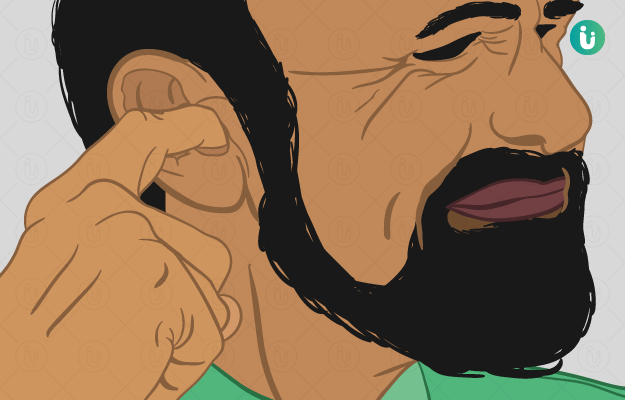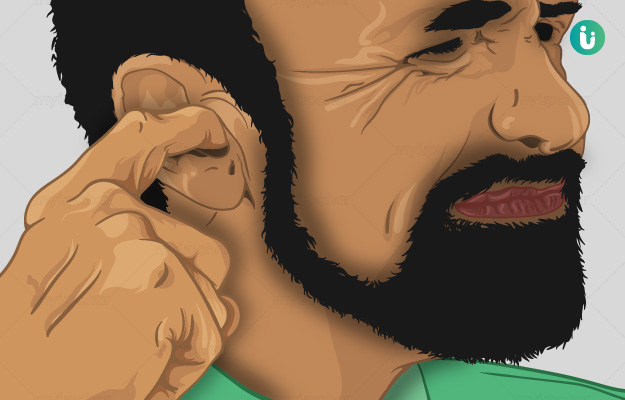What is a blocked ear?
The middle ear is connected to the back of your nose by tubes called Eustachian tubes, obstruction of which leads to a blocked ear. In this condition, fullness or pressure may be experienced in the ears. The tube may be blocked due to various reasons which range from wax build up to an ear infection to a sudden change in ear pressure.
What are its main associated signs and symptoms?
The following symptoms are seen with ear block:
- Dizziness
- Cough
- Pain in the ear (earache) and feeling of fullness
- Itchiness experienced in the affected ear
- Discharge or foul odour from the ear
- Ringing in the ear (tinnitus) or popping noises without any external source of sound
- Reduced hearing or difficulty in hearing due to the affected ear which may continue to worsen,
When an individual experiences an earache or decreased hearing, doctors advice to rule out any another medical condition of ears which might be in need of an immediate attention like a damaged eardrum.
What are its main causes?
The outer half of the ear canals are lined by skin which contains glands that secrete wax. The deeper structures, such as the eardrum, are protected from damage by this wax and tiny hair which trap dust and other foreign particles. A small amount of this wax is regularly thrown away at the ear opening when new wax replaces it. However, if this wax is secreted in excess or is not appropriately cleared out, it starts building up. This can lead to a blockage in the ear. This is very common in individuals who try cleaning their ears on their own using devices like ballpoint pens and pins, etc.. The other common causes of a blocked ear include:
- Swelling of the Eustachian tube from a sinus infection, cold, or allergies.
- Fluid collection.
- Infection in the ear.
- Changes in pressure while diving, flying, etc.
How is it diagnosed and treated?
Ear blockage is usually diagnosed by using a special instrument called otoscope. It uses lights and magnifies the inner ear, making it easy for the doctor to examine your ear.
Treatment of blocked ear includes:
- If the Eustachian tube is blocked after a cold or due to high altitudes, try the following:
- Chewing sugar-free gum or swallowing, yawning can help to open the Eustachian tubes.
- If the above remedy does not work try again by pinching your nostrils closed and keeping your mouth shut and breathe gently. A popping noise indicates that the tube is opened.
- If the ear canal is blocked due to wax, the following methods are employed:
- Removal of excess wax by a physician using a curette which is a small, curved instrument
- Physician can also use suction pressure to remove wax.
- A water source like a pick or a rubber-bulb syringe filled with warm water may be used by the physician to flush out wax.
- In case of recurrent blockages, physicians recommend wax-removal medication, which melts the wax and it can then be cleaned using cotton ear buds.
- In individuals with allergies, the cause is treated with steroid medicines which are sprayed into the nose, or decongestants (taken orally or as a nasal spray), which automatically clears the blockage.
- In case of infections, antibiotics can be prescribed.
- In some cases of blocked Eustachian tube, surgery is also required.

 Doctors for Blocked Ear
Doctors for Blocked Ear  Blocked Ear articles
Blocked Ear articles

 Home Remedies for Blocked Ear
Home Remedies for Blocked Ear







 Dr. Laxmidutta Shukla
Dr. Laxmidutta Shukla











